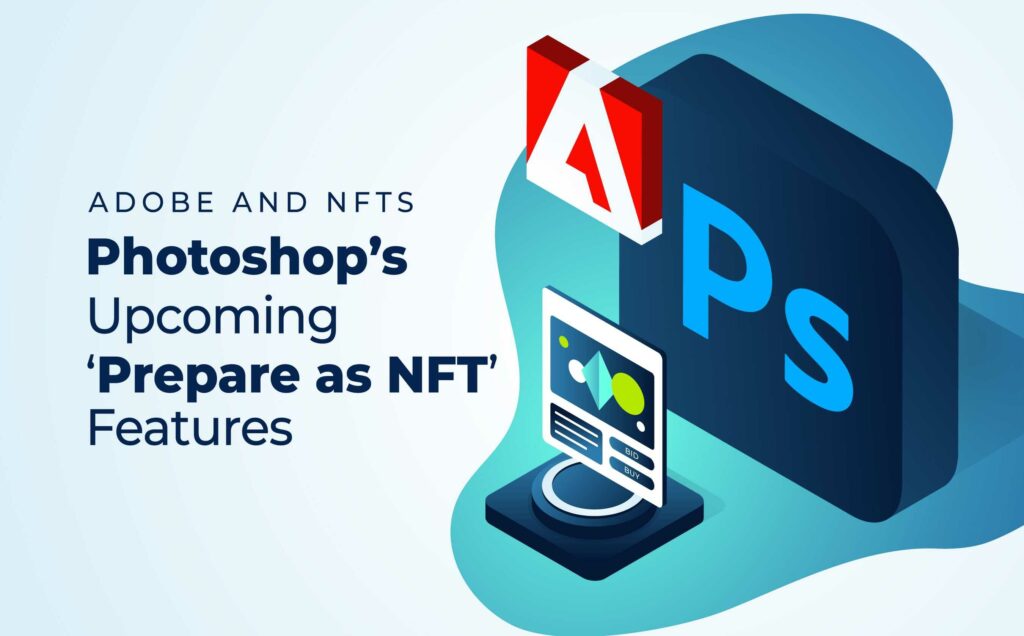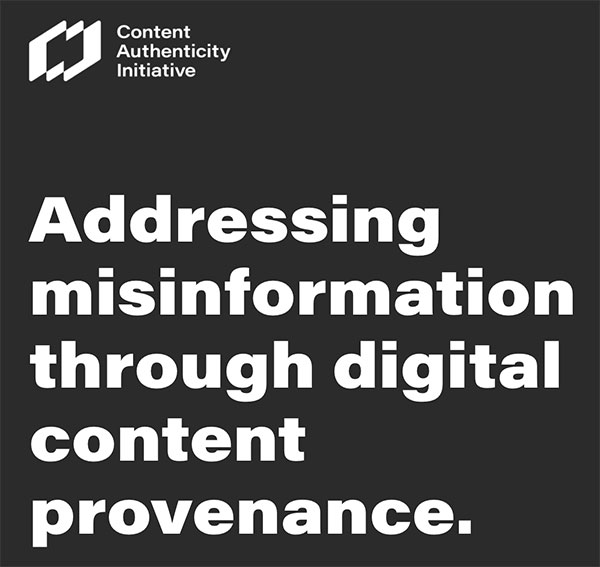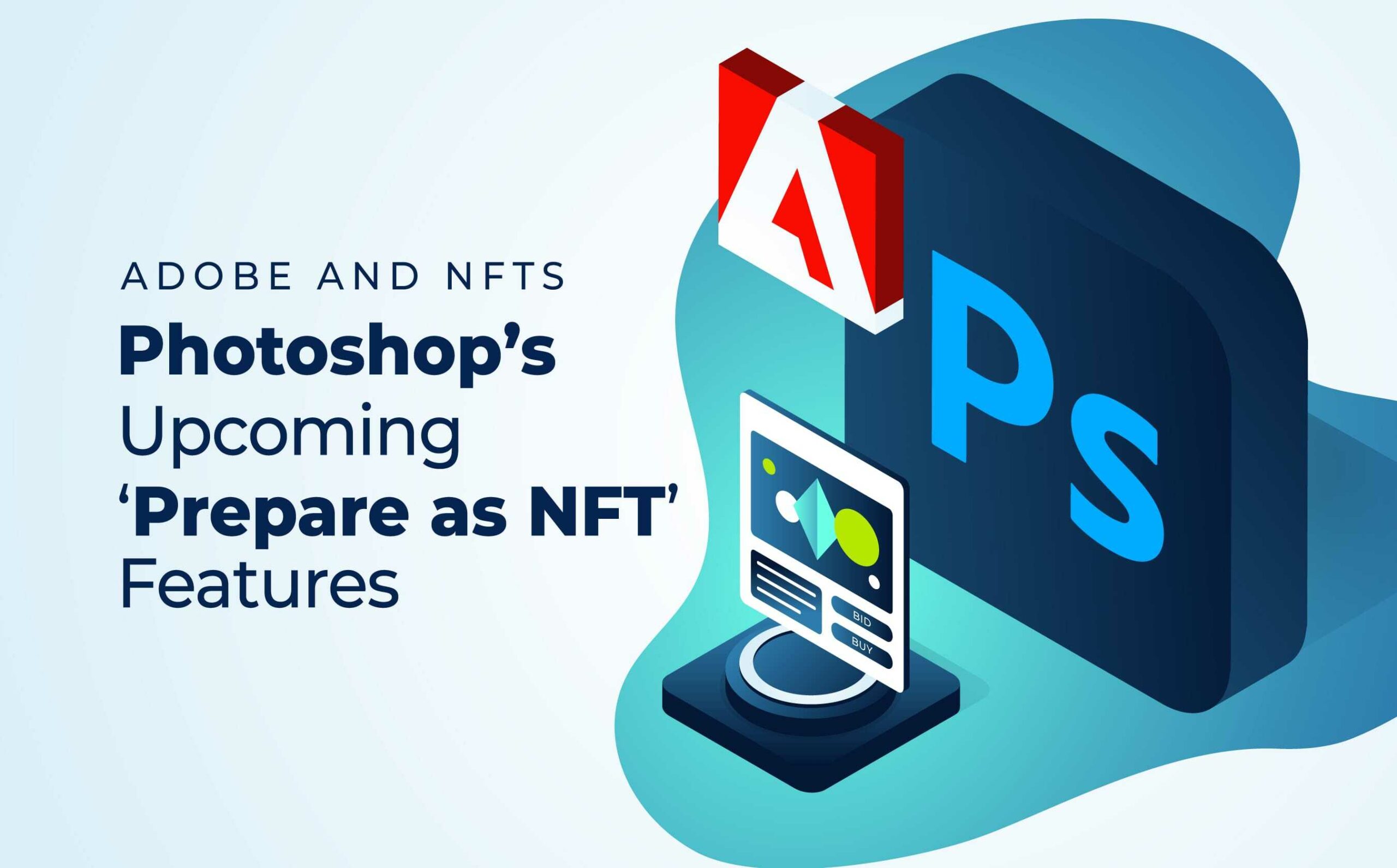
Adobe’s recent decision to introduce NFT functionality – sometimes nicknamed “Adobe NFTs” – offers an exciting new feature that could revolutionize the NFT sector. Most importantly, Adobe NFTs come with built-in proof of ownership. The NFT market is exploding, which is great news for artists and collectors alike. The problem, however, is that NFT scams have increased along with the sector’s growing popularity. In one dodgy deal alone, the “Evolved Apes” scandal, scammers bilked investors for millions of dollars. Scams come in a variety of shapes and sizes. However, one that consistently afflicts content creators is when imposters mint and sell artwork that doesn’t belong to them. They then turn around and sell these counterfeits to unsuspecting buyers. Thankfully, Adobe, founders of the popular creative suite that includes Photoshop, Illustrator, After Effects and many others, are working on an “Abode NFTs” identification system.

This article will cover how Adobe’s “Adobe NFTs” features can incorporate their new credential system to protect artists. It will also uncover some of the other NFT scams out there. If you’re ready to learn about the blockchain, the foundation on which NFTs are built, make sure to take our Crypto for Beginners course at Moralis Academy.
What is an NFT?
NFT stands for “non-fungible token,” and it is a unique digital identifier. Digital art has been all the rage in the NFT space, with pieces selling for millions of dollars. But NFTs can also include things such as music, video game items, and drawings. Furthermore, an NFT can be a unique, one-of-a-kind piece like a painting or part of a series such as trading cards. Moreover, the cool thing is that the blockchain can keep track of NFT ownership. If you need more information, please read our introductory article on non-fungible tokens.
Adobe’s Content Authenticity Initiative (CAI)
Adobe launched its “Content Authenticity Initiative” (CAI) approximately two years ago in response to online impersonators. The CAI’s purpose is to protect creators through digital provenance while combatting visual misinformation on the internet. The definition of “provenance” is “the place of origin or earliest known history of something.” Moreover, Adobe seeks to correct digital misinformation by applying it to online content.
Adobe’s latest weapon to aid in this battle is what’s called “Content Credentials.” These credentials will offer a new way to assess content origin and attribution. With this development, Adobe seeks to help answer the question “who created what?”. It’s shaping up to be an excellent way to expose counterfeits.
Moreover, Content Credentials in Adobe NFTs offer individuals and organizations easy and accessible features and technical standards. It’s all part of their global effort to create a more trustworthy and transparent digital landscape.

Adobe NFTs Content Credentials
Adobe is launching Content Credentials for its worldwide Creative Cloud subscribers. Initially, these credentials will be available in Adobe Photoshop, Stock, and Behance. As these specific workflows become more commonplace and continue to develop, they will offer creators clearer proof of content ownership for their NFTs.
Photoshop’s Content Credentials
Content Credentials will launch on Photoshop, but will also be available across the top products and workflows in Adobe’s creative suite. A user only needs a Creative Cloud subscription to get access. This opt-in feature is already available in Photoshop’s beta version. So, creators can attach ownership info to the image when exporting it. Having control of this secure metadata provides much-needed attribution options for creatives looking to secure their Adobe NFTs.
For web surfers, having Content Credentials enabled means they can capture identity information from an image. This feature is instrumental in providing trust for viewers looking to purchase digital content. Adobe NFTs will stand out in the crowded marketplace since Content Credentials can offer buyers the benefit of increased transparency.
Adobe NFTs and Content Credentials Verification
To add Content Credentials to your NFT exports in Photoshop, go to “Preferences” > “Technology Previews”. Then, check the box “Enable Content Credentials (Beta)”. Your changes will take effect after restarting Photoshop.

Users can inspect the Adobe NFTs Content Credentials at Adobe’s “Verify“ website.
Content Credentials in Adobe Stock Assets
Adobe Stock photos automatically include Content Credentials, and Photoshop displays the credentials, as the Verify website does. The credentials will identify the asset as coming from Adobe Stock.
Linking Photoshop to Crypto Accounts
To ensure provenance for Adobe NFTs, creators can connect their Photoshop images to their crypto wallet via Content Credentials. It will further assist those looking to identify who the original content creator is. So, crypto addresses will also play a pivotal role as creators mint their Adobe NFTs.
Adobe is partnering with NFT marketplaces such as OpenSea, KnownOrigin, SuperRare, and Rarible to display Content Credentials. By doing so, collectors can match these up with the wallet address to see if the same address used to mint the NFT is the same one selling it.

All of these NFT marketplaces exist on the Ethereum blockchain. To get a deeper understanding of how they work together, make sure to take the Ethereum 101 course at Moralis Academy.
Content Credentials and Behance
Behance is a social media network for showcasing and discovering creative work. If an image has Content Credentials attached, it will be visible. That feature is available only when viewing the image on Behance or the Verify website, where potential buyers can view more details.
Adobe is also looking forward to releasing an open-sourced developer kit for dev teams looking to integrate Content Credentials into their products with updates and new releases.

Adobe NFTs and Expanding Partnerships
New developments in the NFT space are moving at a brisk pace. So, creators and investors will need all the tools at their disposal to stay on top of everything. The right tools will be critical when building bridges across the multitude of burgeoning sectors that extend beyond art.
Adobe isn’t going there alone, thankfully. In their battle to fight misinformation, the firm joined the U.S. Senate and endorsed the “National Deepfake Task Force Act”. This bill seeks to empower everyday consumers with clear and correct information about online content.
Also, in only a few years, the CAI expanded from its three founding partners (The New York Times, Twitter, and Adobe) to over 400 members. These include major players such as Microsoft, BBC, The Washington Post, Getty Images, the Gannett newspaper chain, Nikon, etc.
The CAI and its partners also launched a membership program and implemented working prototypes to hold events and foster agreements that validate attribution and provenance.
CAI and C2PA
Adobe also pitched in to establish a standards development organization: the “Coalition for Content Provenance and Authenticity” (C2PA). Furthermore, the C2PA was created by “The Linux Foundation“, a nonprofit organization that supports, protects, and standardizes open technology efforts.
After an eight-month stint, the C2PA drafted provenance specifications for public consumption before their “Version 1” release. This step is vital to building an industry-wide standard that can stand the test of time.
C2PA members include Adobe, BBC, Intel, Microsoft, Twitter, and dozens of other organizations and contributors.
With open systems and widely adopted standards, organizations across the internet can work together to ensure that products in the digital world are more trustworthy and safer.
Creators benefit from tamper-proof transparency regarding the true origins of their content and later changes to it. On the other hand, shoppers get a better insight into provenance and can make informed purchasing decisions.

Adobe NFTs – The Road to Digital Provenance
While nailing scammers and copycats is always satisfying, Adobe’s goal here is to provide information about what is real. It’s not so much about exposing fraudsters. One day in the future, customers on the internet can expect to see all digital content backed by provenance.
The Adobe team is excited to see that all the hard work is starting to get released into the mainstream. While digital images in Photoshop are at the forefront, Adobe is also looking at ways to grow into other areas of their Creative Cloud suite. The coming year promises more testing on different digital media formats. So creators outside the world of digital imagery have something to look forward to as well.
The road to mass adoption of digital provenance could be a long one. But this latest milestone is an important step. So, Adobe is celebrating for now and looks forward to new developments in the future.
NFT Scams
It’s no secret that NFT scams are on the rise. After all, anytime there is a profitable sector in crypto, one can expect new and inventive scams to follow. Adobe is working hard to prevent thieves from ripping off other artists’ work and selling it as their own. That’s because not only does the artist get hurt, the buyers who purchase the fake one end up with an NFT of zero value. Here are some of the other scams in the NFT world:
Garbage NFTs
Whenever an NFT gets hyped, such as “CryptoKitties,” you can be sure that imitators like “CryptoCelebrities” will follow. Fake NFTs run rampant in such scams, so beware. If you buy a celebrity’s likeness and try to sell it as an NFT without their permission, you’re likely to get a cease and desist order.
Fake NFT Minting
Developers can make it look like influencers such as @LoganPaul or @garyvee are minting NFTs when they’re not.
Emails, Airdrops, and Impersonators
Brand Emails
Be cautious when emails promote popular NFTs. They can look like correspondence coming from a legitimate brand. However, fake emails are out there to lure you to a site where scammers can get your wallet’s passphrase.
Airdrop Impersonators
Popular projects or personalities can have their verified accounts hacked or rebranded to look like the real thing. If it seems “off,” double-check the handle and the airdrop promotion independently without clicking their link. In addition, spelling errors in advertising are also red flags.
Bogus Airdrops on Telegram
These scams are a popular way to trick people into providing their keys. Scam airdrops are most likely to be found on Telegram and Twitter.
Direct Messages
Discord DMs
Always be wary of direct messages, whether they come from someone you know, a famous brand, or a project admin. If someone DMs you with a request, research their legitimate handles and DM them from there before replying. Should their initial conversation pop up, then it’s a legit request. If not, someone could be trying to scam you.
Twitter DMs
If it sounds too good to be true, it probably is. If you’re an artist anxious to sell your NFT, don’t get suckered by a DM offering to buy your NFT in exchange for something else. Usually, they’ll ask you to send crypto or go to their website and fill out a form. It is better to require these people to go through the same purchasing process on a legitimate NFT exchange that your other buyers have to go through.
Other NFT Scams
Google Ad Scams
Paid advertisers can buy their way to the top spot on Google Search. This feature is excellent for consumers looking for legitimate products, but it is not great when Google doesn’t verify its ads properly. Furthermore, fraudsters can use NFT promotions as phishing scams.

Account Hacks
It’s no fun getting your crypto exchange hacked and losing your NFTs. Hackers can use SIM swaps and email exploits to bypass 2FA settings. At the very least, harden your cellphone access with a password to mitigate 2FA risks. Also, if you’re not actively trading your NFTs regularly, it’s better to put them in cold storage than leave them on an exchange.
Bogus Investment Opportunities
If a salesperson contacts you with a great NFT investment opportunity, they may or may not be legit. Even if they try to build trust by answering questions and handling objections about their new ICO launch, keep your guard up. If they start asking you to send them crypto, don’t be surprised if they disappear with it.
Weaponized NFTs
These are pretty scary, and more investigation is warranted. But it appears someone was able to hack a user by sending garbage NFTs. Hopefully, this case was only a user error.

The Future of Adobe NFTs
NFT scammers can be pretty creative, and they’re always on the lookout for new and improved ways to clean out their prey’s crypto wallet. However, with Adobe’s expanded partnerships, Abobe is not alone in the fight against scammers. As such, in the immediate future, Adobe NFTs offer artists and other content creators some hope, at least in dealing with counterfeits and copycats. Furthermore, with Adobe Content Credentials, Abobe will offer creators clearer proof of content ownership for their NFTs.
Now is the time to get a complete blockchain education! Start today at Moralis Academy.





